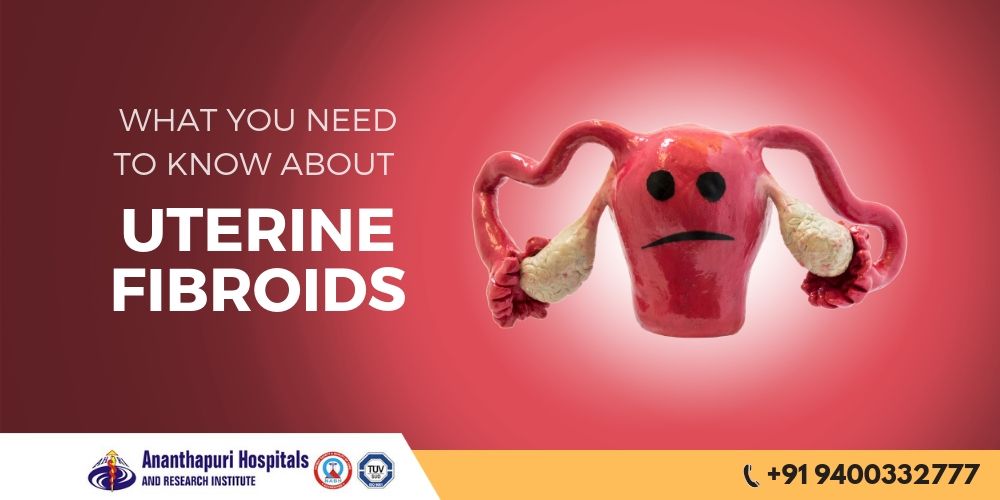- 06/May/2019

Uterine Fiberoids: Treatment, Symptoms, Causes - Ananthapuri Hospitals
While some of you may have had an unfortunate case of a uterine fibroid, many of you would have at least heard about fibroids when one of your relatives or friends had them. Fibroids are also called Fibroma, Leiomyoma and Myoma. About 20% of women develop fibroids, usually during their reproductive years (approximately 16 to 50 years of age), when oestrogen levels are at their highest.
Here are some frequently asked questions!
WHAT ARE FIBROIDS AND WHAT CAUSES IT?
Fibroids are non-cancerous growths of smooth muscles of the uterus. Very rarely, they become cancerous. They develop in the uterus, in various sizes - they can be as small as a pea or as large as an orange. They rarely develop in reproductive structures like ovaries and other non-reproductive organs, where smooth muscles are present. The exact cause of fibroids is still unknown. However, they have been linked to the female reproductive hormone ‘oestrogen’, which is produced by the ovaries.
WHAT ARE THE SYMPTOMS?
Often, fibroids will cause minimal or no symptoms, and treatment may not ever be necessary, especially if they are small. Fibroids are often only discovered during clinical imaging investigations (like Ultrasound, MRI or CT) for other conditions.
But depending on their number, size and location, you may experience symptoms like heavy menstrual bleeding, pelvic pain, abdominal bloating, fatigue, infertility and so on. Constipation or an urgent need to urinate are indications of a large fibroid squeezing the organs around your uterus.
WHO IS MORE LIKELY TO BE AFFECTED BY FIBROIDS?
Women of reproductive age (16-50 years) are most likely to be affected by fibroids.
Women who are overweight or obese are also at higher risk of fibroids, as being overweight increases the amount of oestrogen produced by the body
After menopause, as the oestrogen levels become low, any existing fibroids tend to shrink and are less likely cause any symptoms.
WHAT IF I BECOME PREGNANT WITH A FIBROID IN THE UTERUS?
Small-sized fibroids that are about 5cm are less likely to cause any harm during pregnancy. However, there is a possibility for the fibroids to grow in size and may cause discomfort and pain due to increased levels of hormones and blood flow to the uterus. Depending on the size and location of the uterine fibroid, there may or may not be complications during the pregnancy.
WHAT ARE THE TREATMENT OPTIONS?
The treatment depends on a number of factors like size, site (location of the fibroid in the uterus), your age, number of children at present, the severity of your symptoms, and your future pregnancy plans. The doctor may start medications depending on the severity of your symptoms. If your medication proves to be ineffective, you may require a surgery to remove the fibroids alone (called Myomectomy) or along with the uterus (called Hysterectomy). This surgery can be an open surgery or a minimally invasive (laparoscopic) surgery.
WILL FIBROIDS COME BACK AFTER THE TREATMENT?
Yes, there is a chance that the fibroids may come back. However, this does not happen if you perform a hysterectomy, that is, your entire uterus is removed. Doctors advise a hysterectomy for women who have completed the family (means that they do not want any more children) do not want to retain their uterus or who are beyond 40 years of age with no future pregnancy plans.
Are you at the risk of having fibroids? Do you have any symptoms? Consult a gynaecologist to make sure.
Ananthapuri Hospital has a specialised team of gynaecologists and obstetricians at your service. Call us at +91 9400332777 or visit our hospital at Chacka, NH Bypass, Thiruvananthapuram.
- tags
- Uterine Fiberoids

